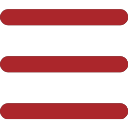


Woven bags, also known as polypropylene (PP) bags or woven sacks, are widely used for packaging various products such as grains, seeds, fertilizers, chemicals, and construction materials. These bags are durable, versatile, and cost-effective packaging solutions that offer strength, breathability, and protection to the contents. The manufacturing process of woven bags involves several key steps, with cutting and sewing machines playing a pivotal role in transforming woven fabric into finished bags. In this comprehensive article, we will delve into the critical role of cutting and sewing machines in woven bag manufacturing, exploring their functions, technologies, and importance in the production process.
The manufacturing process begins with extruding polypropylene resin into flat tapes or filaments, which serve as the raw material for weaving. The extruded tapes are stretched, cooled, and wound onto bobbins for further processing.
The extruded tapes are fed into circular or flat weaving looms, where they are interlaced to form a woven fabric structure. The weaving process creates a stable and durable fabric with crosswise and longitudinal threads, known as warp and weft, respectively.
After weaving, the woven fabric is cut into individual panels or rolls of specific dimensions using cutting machines. Precision cutting ensures uniformity in size and shape, facilitating the subsequent sewing process.
The cut fabric panels are stitched together using sewing machines to form the body of the woven bag. Sewing machines create strong and secure seams, ensuring the integrity and strength of the bag for holding and transporting various products.
Cutting machines accurately cut woven fabric into panels or rolls of desired dimensions, ensuring consistency and uniformity in bag size and shape. Precision cutting is essential for optimizing material usage and minimizing waste in the manufacturing process.
Sewing machines reinforce the seams of woven bags with strong and durable stitches, enhancing the bag's structural integrity and load-bearing capacity. Reinforced seams prevent leakage, breakage, and product spillage during handling and transportation.
Cutting and sewing machines enable the customization of woven bags with features such as handles, closures, printing, and labeling. Customized bags cater to specific customer requirements and branding preferences, enhancing product visibility and marketability.
Modern cutting and sewing machines are capable of high-speed production, enabling manufacturers to meet large-scale production demands efficiently. High-speed machines increase productivity, reduce lead times, and ensure timely delivery of woven bags to customers.
Cutting and sewing machines contribute to quality control in woven bag manufacturing by ensuring consistent and uniform production standards. Automated cutting and sewing processes minimize errors, defects, and rework, resulting in high-quality finished products
Cutting and sewing machines improve manufacturing efficiency by automating repetitive tasks and streamlining production processes. Automated cutting and sewing systems increase throughput, reduce labor costs, and enhance overall operational efficiency.
Cutting and sewing machines offer versatility in producing a wide range of woven bag styles, sizes, and configurations to meet diverse packaging requirements. Versatile machines accommodate various fabrics, seam types, and finishing options, allowing for customization and flexibility in bag production.
Investing in cutting and sewing machines yields long-term cost savings for woven bag manufacturers by improving production efficiency, reducing material waste, and minimizing labor costs. Cost-effective manufacturing processes translate into competitive pricing and higher profitability in the market.
Cutting-edge cutting and sewing machines incorporate advanced technologies such as computerized controls, servo motors, and robotic automation, driving innovation and product development in the woven bag industry. Innovative machines enable manufacturers to stay ahead of market trends, enhance product performance, and meet evolving customer needs.
In conclusion, cutting and sewing machines play a critical role in the manufacturing of woven bags, offering precision cutting, seam reinforcement, customization, high-speed production, and quality control. These machines are indispensable tools in the woven bag industry, enabling efficient, versatile, and cost-effective production of durable and reliable packaging solutions. As the demand for woven bags continues to grow across various industries, cutting and sewing machines will remain essential equipment for manufacturers seeking to meet customer demands, optimize production processes, and stay competitive in the market.
2024-07-12
2024-07-05
2024-06-28
2024-06-21